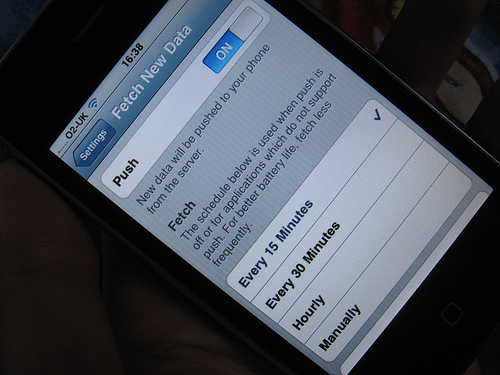Amazon continues to “push” further into the space of becoming a one-stop shop for mobile developers looking to make, host and distribute apps, and in the latest development, today the company’s Amazon Web Services division announced the launch of SNS Mobile Push, which lets developers set up and send notifications — those little messages that pop up on your phones and tablets with app updates, news about your contacts or possibly just annoying marketing messages — to users of its apps across iOS, Android and Kindle devices, with the first million messages sent free.
The new service puts AWS deeper into competition with other big players like Microsoft and Apple as well as a number of smaller startups all offering push notifications for apps. Among them, in December 2012, Microsoft said that it would extend its push notifications service to iOS apps. Mobile gaming services platform Playhaven also recently introduced push notification services. And smaller startups like Boxcar have also made moves into this space. And Apple also offers push notifications on apps, and is expected to extend that to websites with the introduction of Mavericks.
But even with a number of alternatives already available to developers, like much else with AWS and Amazon, this cloud-based service is banking on very keen pricing to attract users: registration and the first one million notifications sent each month are free. After that, every million messages published costs $.50, with another $.50 for every million messages delivered (in other words, $1.00 total per million push notifications). More details on the pricing at Amazon’s SNS site.
This is not Amazon’s first move into simple notification services, but it is the first strong push into mobile apps for the offering. The first Amazon SNS product was launched back in April 2010, for websites to offer users the ability to subscribe to updates on particular optics on sites hosted on AWS. Subsequent to that there have been a number of enhancements, including sending notifications to email and by text message.
Amazon’s push notifications for apps takes this to a much more automated end, and by targeting smartphones and tablets, to the devices that are with us the most. Amazon says it can send messages to individual users, or the same message to many subscribers at once.
Amazon notes that by offering a cross-platform solution, it’s taking out some of the work and cost for developers, who would have in the past had to create notifications and integrations with each platform on which their app exists, or develop their own proprietary solutions.
“Many customers tell us they build and maintain their own mobile push services, even though they find this approach expensive, complex and error-prone,” said Raju Gulabani, VP of Database Services, AWS, in a statement. “Amazon SNS with Mobile Push takes these concerns off the table with one simple cross-platform API, a flat low price and a free tier that means many customers won’t pay anything until their applications achieve scale.”
What’s not clear is when and whether other platforms will be added to the mix. Noticeably absent are Windows Phone and HTML5 web apps — which Amazon very recently started to add to its own Kindle Fire and Android appstore.
Amazon’s notes that some of the companies that have been working with the SNS service in an early phase include Crittercism, the mobile application performance management company, and Urban Airship — two signs of how it’s pitching this not only to developers but to the companies that offer tools to them. Early adopter apps include WeatherBug, which has been sending alerts to users through the tool.
Amazon looks like it will be leaving the content of the messages up to developers for now, but given that it has developed an interesting line in mobile advertising on Kindle devices on the lock screens, it wouldn’t surprise me to see Amazon one day also trying something out like this with the messaging service — offering an even more appealing price as the carrot to attract users.
Image: Flickr
